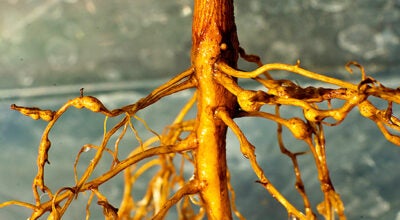MOORE COLUMN: Shark fishing gaining popularity, regs need look
Published 10:38 pm Wednesday, May 18, 2016
Shark fishing is more popular in Southeast Texas than it has ever been.
Catching sharks from the surf in particular has become a passion for many anglers and it is drawing many young people into the sport. Few fish fight as hard as a shark and for many of us simply being in the presence of these great creatures is exciting.
I believe a big part of the uptick in shark interest is economics.
Many people, especially the young, cannot afford an expensive boat and when it comes to local surf bank fishing bull redfish and sharks provide the most action.
There is however a catch.
Shark regulations can be confusing due to the similar appearance of many species so I thought this week we would give some descriptions of key species and review the Texas shark regulations. Anglers are allowed one shark per day with a possession limit of two but there is a huge variance in species regulations.
1. Let us start with the sharks anglers can keep in Texas waters with a minimum length of 24 inches.
• Atlantic sharpnose – body usually has several prominent white spots; second dorsal fin originates over midpoint of anal fin.
• Blacktip – similar to spinner but first dorsal fin originates over the pectoral fins and anal fin lacks black tip.
• Bonnethead – rounded, shovel shaped head with no indentation at midline of snout; maximum size about 5 feet.
2. The following species are allowable with a minimum 64 inch total length.
• Bull – stocky body; no interdorsal ridge; large triangular sloping dorsal fin; bluntly rounded snout.
• Finetooth – fins unmarked; slender smooth teeth; color bluish-grey above and white below.
• Spinner – similar to blacktip but first dorsal fin originates behind the pectoral fins and anal fin has black tip.
• Hammerheads – head hammer-shaped; includes scalloped, great, smooth and smalleye hammerheads.
• Lemon – first and second triangular dorsal fins about equal in size.
• Blacknose – grey to black blotch on tip of snout.
• Thresher – upper lobe of caudal fin extremely long and about half of total body length; similar to bigeye thresher but has no grooves on top of head and white abdominal coloring extends above pectoral fins.
• Tiger – distinctive vertical blotches or stripes.
• Blue – slender body of metallic blue color.
• Shortfin mako – similar to longfin mako but underside of snout and mouth are white; similar to blue shark but has caudal keel.
• Nurse – brown color; first dorsal fin over pelvic fins; very small eyes; barbels on each side of mouth; no distinct lower lobe of caudal fin.
• Oceanic whitetip – broadly rounded white tipped first dorsal fin.
3. These species may not be retained and must be released immediately without removing them from the water.
• Atlantic angel – flat skate-like body; large spiracles behind eyes; two small dorsal fins located near the tail.
• Basking – has enormous gill slits nearly encircling head; maximum size about 32 feet; no similar species; rare in Texas waters.
• Bigeye sand tiger – similar to sand tiger; similar to lemon shark but has first dorsal fin far back on body closer to pelvic fins than pectoral fins; similar to nurse shark but has a distinct lower lobe of caudal fin; rare in Texas waters.
• Bigeye sixgill – has six gill slits; similar only to sixgill; rare in Texas waters.
• Bigeye thresher – upper lobe of caudal fin extremely long and about half of total body length; similar to thresher but has large eyes directed upward, deep grooves on top of the head, and white abdominal coloring that does not extend above pectoral fins; rare in Texas waters.
• Bignose – similar to silky and dusky but has first dorsal fin originating over pectoral fin insertion; similar to sandbar but has longer snout; similar to blacktip and bull but has interdorsal ridge; rare in Texas waters.
• Caribbean reef – similar to blacktip but has interdorsal ridge; similar to sandbar but has first dorsal fin originating behind the pectoral fins; similar to dusky, silky and Galapagos but has a much shorter free rear tip of the second dorsal fin.
• Caribbean sharpnose – similar to Atlantic sharpnose but is rare in Texas waters.
• Dusky – similar to bull, blacktip and spinner but has interdorsal ridge; similar to sandbar but has sloping first dorsal fin originating over or slightly before free tips of pectoral fins; similar to silky but length of second dorsal fin free tip rarely more than twice the fin height.
• Galapagos – similar to grey reef and dusky but is rare in Texas waters.
• Longfin mako – similar to shortfin mako but has dusky or bluish-black mouth area and long broad tipped pectoral fins; similar to blue shark but has caudal keel; rare in Texas waters.
• Narrowtooth – similar to blacktip and spinner but has distinctive narrow triangular upper teeth and a slight arch to the back above the gill slits.
• Night – similar to silky and dusky but has large green eyes; similar to spinner and blacktip but has small dorsal fin and interdorsal ridge; rare in Texas waters.
• Sandbar – similar to dusky but has large first dorsal fin originating over or slightly before pectoral insertion; similar to bull, blacktip and spinner but has interdorsal ridge.
• Sand tiger – similar to bigeye sand tiger; similar to lemon shark but has first dorsal fin far back on body closer to pelvic fins than pectoral fins; similar to nurse shark but has a distinct lower lobe of caudal fin.
• Sevengill – has seven gill slits; no similar species. Silky – similar to bull, blacktip and spinner but has interdorsal ridge; similar to sandbar but has dorsal fin originating behind pectoral fins; similar to dusky but length of second dorsal fin free tip usually more than twice the fin height.
• Sixgill – has six gill slits; similar only to bigeye sixgill.
• Smalltail – has deeply notched anal fin and short gill openings; no similar species.
• Whale – unique pattern of light spots and stripes; maximum size about 40 feet; no similar species.
• White – similar to mako sharks but has large triangular serrated teeth.
The chances of catching some of these species like the white shark for example is super rare.
(To contact Chester Moore, e-mail him at chester@kingdomzoo.com. You can hear him on “Moore Outdoors” Fridays from 6-7 p.m. on Newstalk AM 560 KLVI or online at www.klvi.com.)





